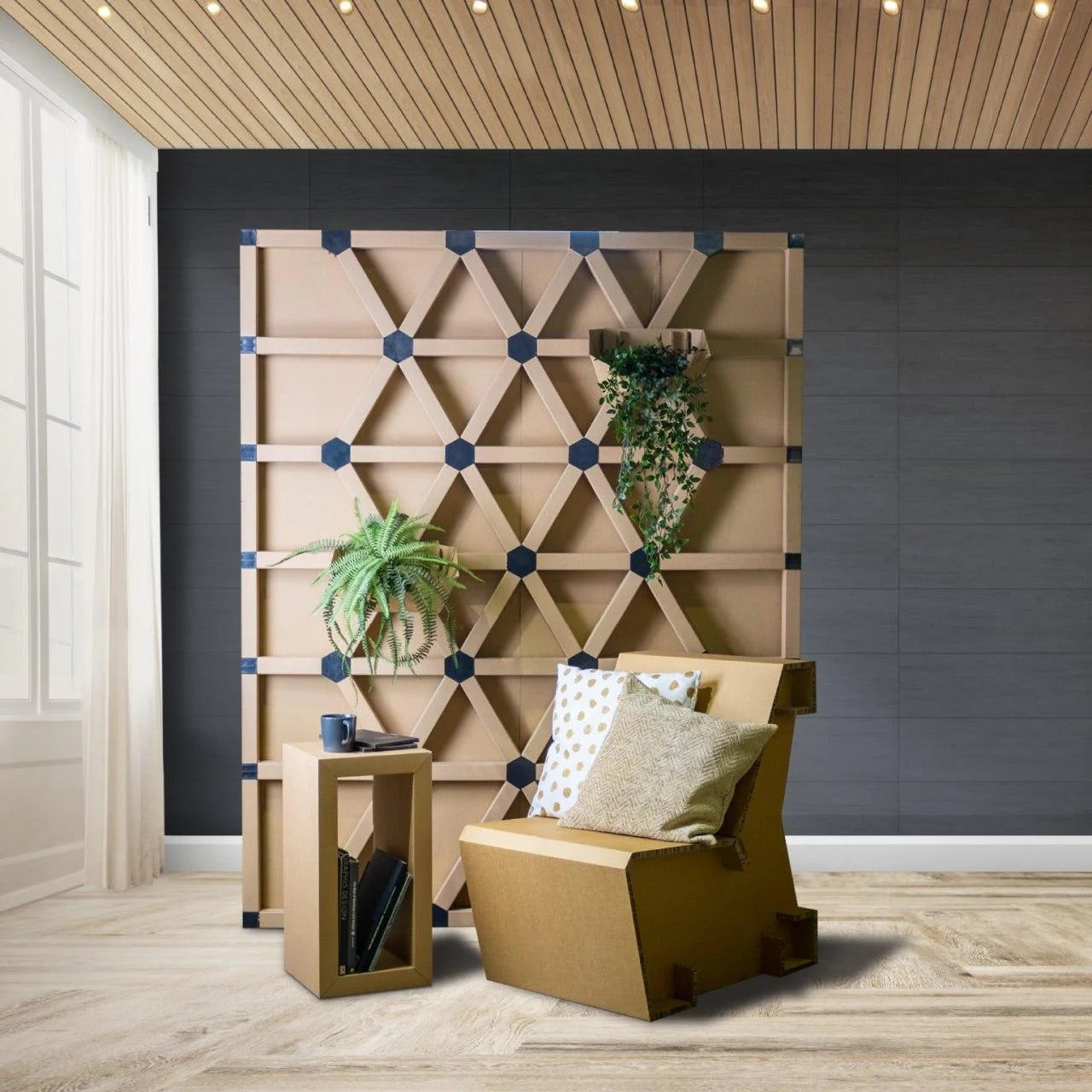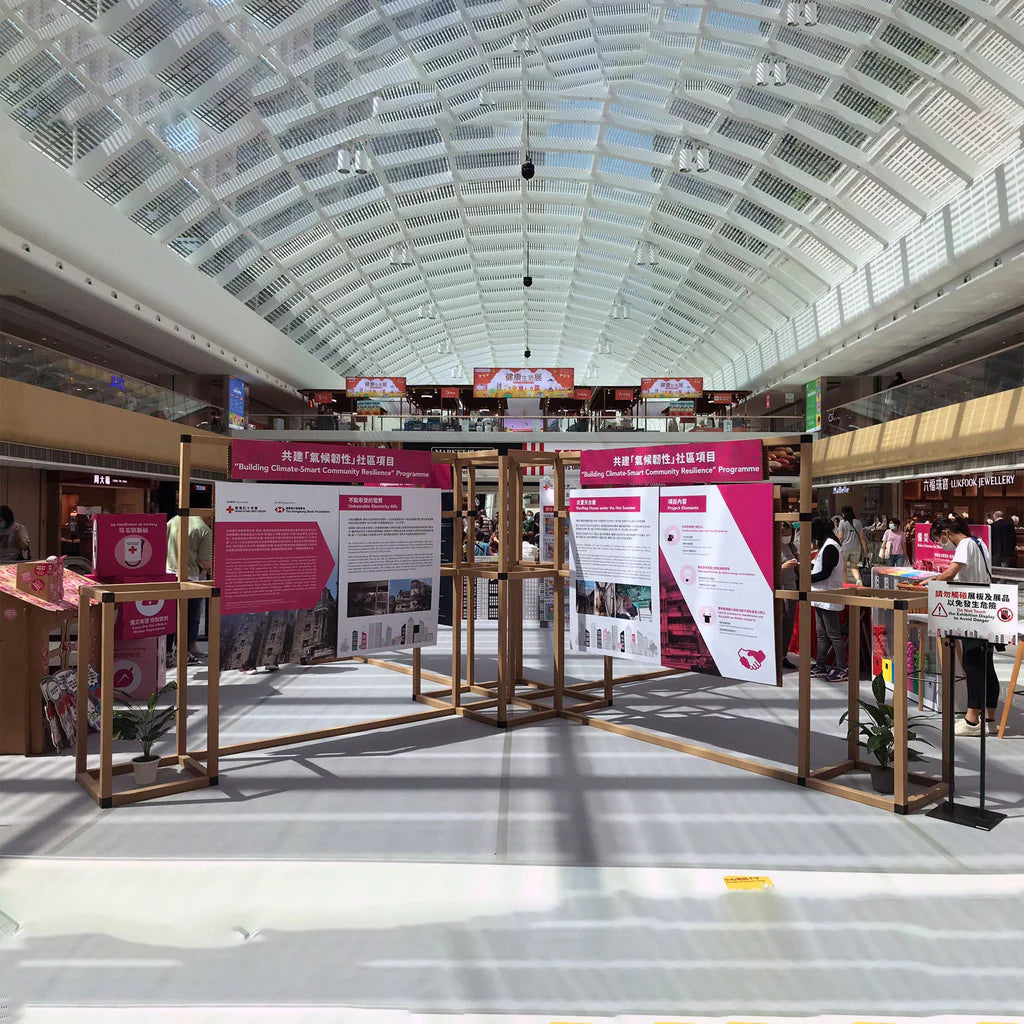
In the world of design, sustainability has become a focal point for architects and designers alike. As the global community grows increasingly aware of the environmental impact of our daily choices, many creators are turning to innovative and eco-friendly materials for their projects. One material gaining prominence in recent years is cardboard.
Cardboard has been attracting attention for its versatile and eco-friendly properties, finding applications in various industries such as MICE (meetings, incentives, conventions and exhibitions), furniture, and packaging.
In this article, we will explore how cardboard is redefining sustainability in modern design.
The Eco-Friendly Properties of Cardboard
Cardboard offers an array of environmental benefits that make it a prime choice for sustainable design. The majority of cardboard is sourced from recycled materials, and being 100% recyclable and biodegradable, its impact on ecosystems is minimal, leading to reduced waste in general.
Another compelling aspect of cardboard is its ability to retain durability and resistance after recycling, allowing for multiple uses without compromising quality.
These qualities make cardboard an excellent material to work with, and designers are finding innovative applications, particularly in furniture and interior design.
Our unique PaperConnect™️ System serves as a notable instance of design innovations surfacing in the sphere of cardboard design. This system consists of hollow, highly compressed paper square bars. These are linked together with recyclable plastic connectors, enabling the creation of an array of structures in distinctive and innovative arrangements.
Innovative Cardboard Furniture and Interior Design

Cardboard's use in furniture and interior design is gaining traction, with designers creating unique, functional, and sustainable pieces. Cardboard furniture is not only lightweight but can also be easily disassembled and transported, making it an ideal choice for temporary and mobile settings.
For example, the Paper Carpenter's PaperConnect System allows users to create a wide range of products, including home and office furniture, holiday decorations, and exhibition equipment. This innovative system demonstrates the potential of cardboard in interior design, offering an environmentally friendly alternative to traditional materials.
The Future of Cardboard in Design

As the world continues to grapple with the effects of climate change, the need for sustainable design solutions is more urgent than ever. Cardboard's eco-friendly properties, versatility, and affordability make it a promising material for a wide range of applications, from furniture to architecture.
Paper Carpenter is pushing the boundaries of what is possible with cardboard, showcasing its potential in various design projects. With continued research and development, cardboard could potentially serve as a viable alternative to more environmentally taxing materials, playing a significant role in reducing the overall carbon footprint for industries that pay a heavy environmental toll; industries such as packaging, shipping and logistics, events and more.
Final Thoughts
Cardboard, a seemingly ordinary material, is proving to be a game-changer in the realm of green design. With more research and development, its eco-friendly properties, versatility, and affordability will only continue to grow, leading to more innovative and practical applications in many industries. Paper Carpenter is sitting at the forefront of sustainability, and as we move forward in our quest to promote environmentally-friendly living, we invite you to explore and harness the potential of cardboard, paving the way for a greener tomorrow.



